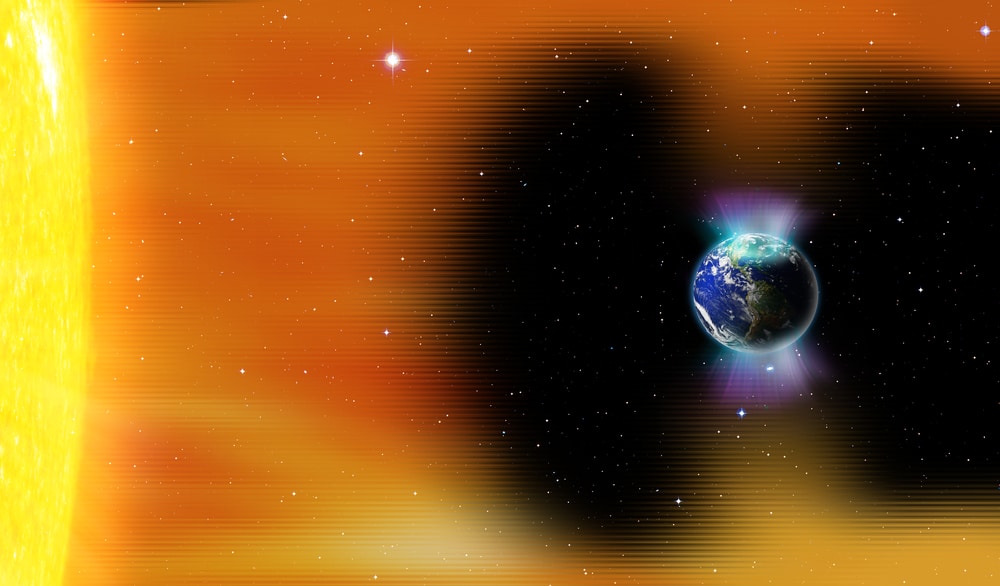A mysterious shock wave in a gust of solar wind has sent a barrage of high-speed material smashing into Earth’s magnetic field, opening up a crack in the magnetosphere. The barrage of plasma could lead to a geomagnetic storm today (Dec. 19), according to spaceweather.com.
The shockwave’s origins aren’t exactly known, but scientists think it could have come from a coronal mass ejection launched by the sunspot AR3165, a fizzing region on the sun’s surface that released a flurry of at least eight solar flares on Dec. 14, causing a brief radio blackout over the Atlantic Ocean.
Sunspots are areas on the sun’s surface where powerful magnetic fields, created by the flow of electrical charges, knot into kinks before suddenly snapping. The resulting release of energy launches bursts of radiation called solar flares, or plumes of solar material called coronal mass ejections (CMEs). Once launched, CMEs travel at speeds in the millions of miles per hour, sweeping up charged particles from the solar wind to form a giant, combined wavefront that (if pointed toward Earth) can trigger geomagnetic storms.
Geomagnetic storms occur when energetic solar debris (mostly consisting of electrons, protons and alpha particles) gets absorbed by, and subsequently compresses, Earth’s magnetic field. The solar particles zip through the atmosphere near the poles where Earth’s protective magnetic field is weakest and agitate oxygen and nitrogen molecules — causing them to release energy in the form of light to form colorful auroras such as the northern lights.
The storms can also create cracks in the magnetosphere which remain open for hours at a time, enabling some solar material to stream through and disrupt satellites, radio communications, and power systems.
Thankfully today’s potential storm, predicted to be a G-1 class, will be fairly weak. It may cause minor fluctuations in power grids and impair some satellite functions — including those for mobile devices and GPS systems. It could also cause an aurora to appear as far south as Michigan and Maine.
More extreme geomagnetic storms, however, can have far more serious effects. They can not only warp our planet’s magnetic field powerfully enough to send satellites tumbling to Earth, but can disrupt electrical systems and even cripple the internet.
The upcoming storm is just the latest in a string of solar attacks fired at Earth as the sun ramps up into the most active phase of its roughly 11-year solar cycle. (SOURCE)
















